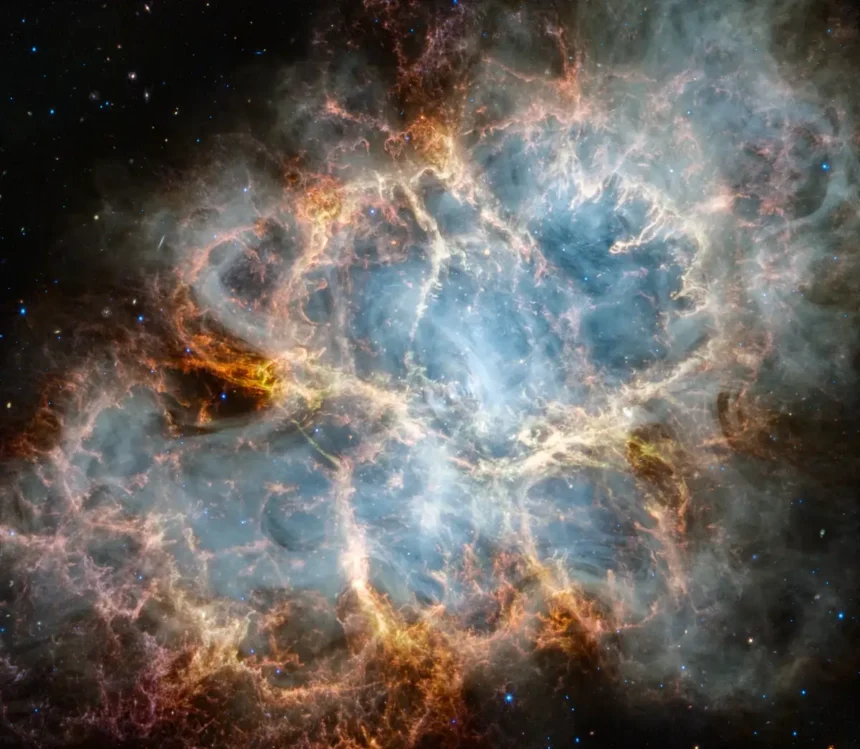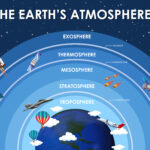Introduction
Gazing into the cosmos reveals a world of mesmerizing colors and shapes, each telling a story of stellar birth and death. NASA’s latest discoveries have unveiled some of the most breathtaking and mysterious nebula.
The cosmos is a vast tapestry of thrills and wonders, with a few servings of nebula, which are enchanting and have enigmatic features. This massive amount of smoke and dust particles is the starting path of stars and the remains of stellar explosions. Thanks to the relentless pursuit of discovery and the advanced technology of NASA, ten new have recently been identified, adding to our growing understanding of the universe.
This list of recently Identified Nebula by NASA offers a glimpse into the universe’s most enigmatic regions, where stars are born, evolve, and eventually perish. These celestial wonders, captured with advanced technology, showcase the beauty and complexity of our galaxy.
This article delves into 10 of NASA’s most recent nebula discoveries, highlighting their unique characteristics and significance. From the vibrant hues of emission nebula to the intricate structures of planetary nebula, these newly identified formations enhance our understanding of the cosmos and inspire awe and curiosity.
Join us as we explore these stunning stellar nurseries and remnants, illuminating the ongoing marvels of space exploration through the lens of NASA’s groundbreaking research.
Read also: Ghost In The Cosmos: The Challenging Discovery of Nube, the Dwarf Galaxy
Read also: Andromeda Galaxy: definition, Facts, distance, location
Which 10 Are the Recently Identified Nebula by NASA?
A glimpse of the 10 recently identified nebula by NASA:
| Name of the Nebula | Constellation | Distance (in light year) | Other Name | Special Feature |
| Dumbbell Nebula | Vulpecula | 1200 | Messier 27 | First planetary nebula discovered |
| Carina Nebula | Carina | 7500 | NGC 3372 | Large star-forming region |
| Eagle Nebula | Serpens | 7000 | Messier 16 | Home of the Pillars of Creation |
| Trifid Nebula | Sagittarius | 9000 | Messier 20 | Three-lobed appearance |
| Boomerang Nebula | Centaurus | 5000 | None | The brightest star-forming region in the Large Magellanic Cloud |
| Crab Nebula | Taurus | 6500 | Messier 1 | Remnant of a supernova observed in 1054 AD |
| Tarantula Nebula | Dorado | 161000 | 30 Doradus | The first planetary nebula discovered |
| Bubble Nebula | Cassiopeia | 7100 | NGC 7635 | Giant bubble blown by a massive star |
| Omega Nebula | Sagittarius | 5500 | Messier 17, Swan Nebula | One of the largest star-forming regions in the Milky Way |
| Lagoon Nebula | Sagittarius | 5000 | Messier 8 | Visible to the naked eye |
Now let’s discuss in detail the 10 recently identified nebula by NASA:
1. The Dumbbell Nebula (Messier 27)
This nebula was first discovered in 1764. M27 was the first planetary nebula ever identified. The term Nebula was introduced mainly based on its round, planet-like appearance.
This nebula is formed from an old star shedding its outer layers in a brilliant display of color. In the Hubble image of a small section of M27, blue represents oxygen, green represents hydrogen, and red indicates sulfur and nitrogen.
M27 contains numerous knots of gas and dust. In Hubble’s image, some of these knots resemble fingers pointing towards the central star, located just off the upper left of the picture, while others appear as isolated clouds, some with tails and some without. These knots range in size from 17 billion to 56 billion kilometers, several times the distance from the sun to Pluto, and each contains as much mass as three Earths. This is also one of the recently identified Nebula by NASA.
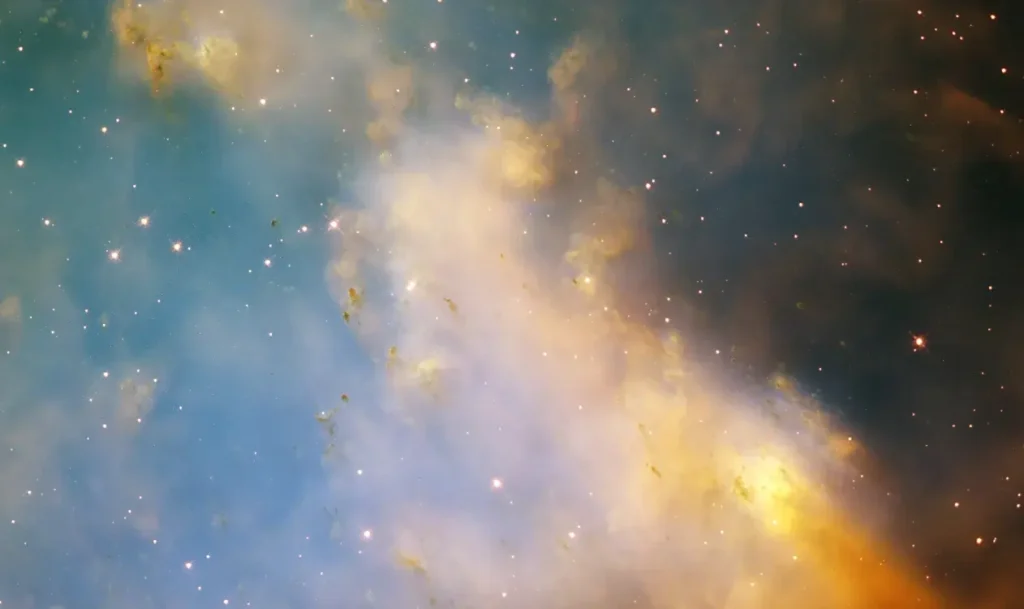
Read also: Surviving the Next Solar Storm: 5 Essential Facts You Need to Know
2. The Carina Nebula
The Carina Nebula is another recently identified nebula by NASA. It consists of a considerable amount of cloud, gas, and dust and is a place of intense star formation. It is located at 7,500 light years in the southern constellation Carina, the more significant part of the Historical constellation Argo Navis, a hub of cosmic activities.
The Carina Nebula houses at least a dozen highly bright stars, each estimated to be 50 to 100 times more massive than our Sun.
Hubble’s detailed observations reveal new insights into the star-forming processes within the nebula. The dynamic landscape is shaped by powerful outflowing winds and intense ultraviolet radiation emitted by massive stars, eroding the remaining material from the giant cloud that birthed them.
One of the most renowned residents of the Carina Nebula is the volatile and colossal double-star system, Eta Carinae. This nebula falls under the category of “recently identified Nebula by NASA.”
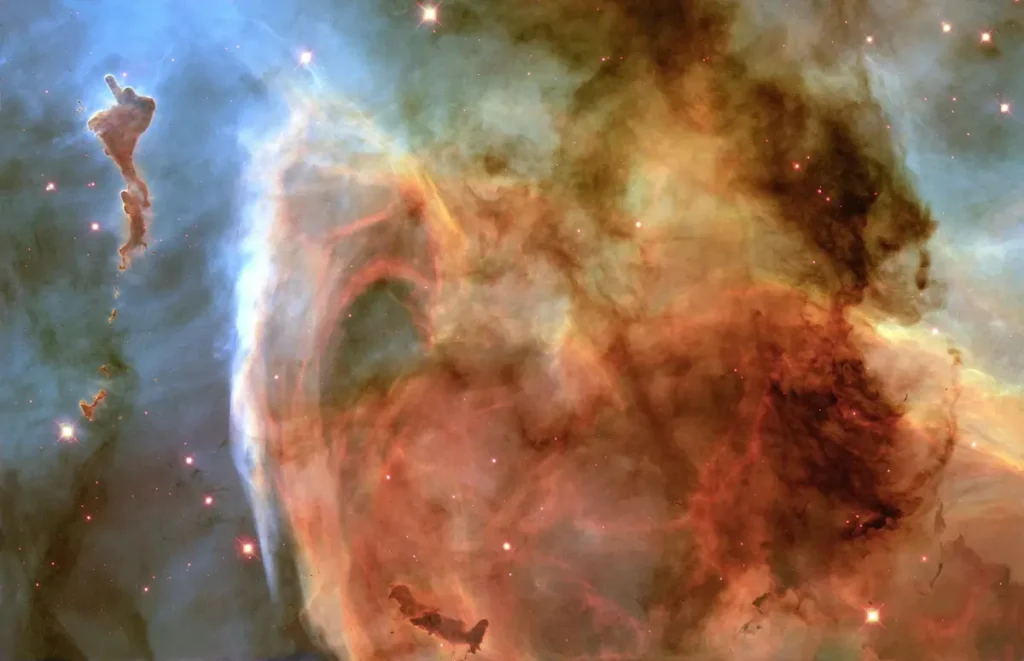
Read also: Exploring exoplanets: a journey towards the Distant Worlds
Read also: Discovery of Exoplanets in 2021
3. The Eagle Nebula (Messier 16)
Another recently identified Nebula by NASA is M16, where the towering tendrils of cosmic dust and gas are at the heart of M16, also known as the Eagle Nebula. Known as the Pillars of Creation, these formations are showcased in this breathtaking Hubble image.
It reveals an active star-forming region within the nebula, concealing newborn stars within their wispy columns. Although Hubble has imaged this iconic feature before, this version is the most detailed. In the image, blue signifies oxygen, red indicates sulfur, and green represents nitrogen and hydrogen.
The Pillars of Creation stretch approximately 4 to 5 light-years but are a relatively minor feature within the vast Eagle Nebula, which spans 70 by 55 light-years. The intense ultraviolet light from a cluster of young stars just outside the frame illuminated the pillars. The breeze from these stars gradually erodes the towers of gas and dust. A large telescope and optimal viewing conditions are necessary to resolve the intricate details of the Pillars of Creation.
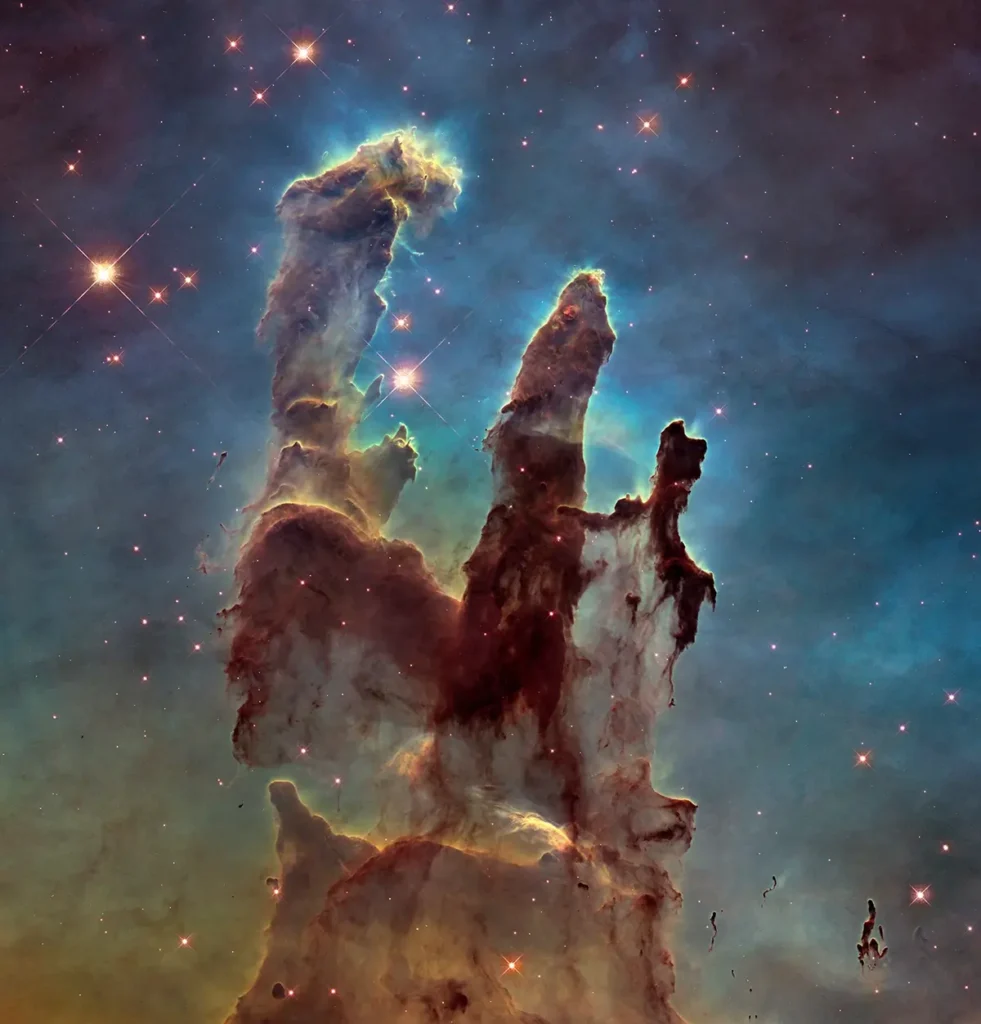
4. The Trifid Nebula (Messier 20)
M20 is part of the recently identified Nebula by NASA, which was introduced by Charles Messier in 1764. Also referred to as the Trifid Nebula, it is a star-forming nebula located 9000 light-years away in the constellation Sagittarius. Its apparent magnitude of 6.3 can be observed with a small telescope, especially in August.
This eerie Hubble image captures the center of the Trifid Nebula and highlights the three wing-like bands of thick dust that give the Nebula its name.
A cluster of recently formed, massive, bright stars is visible towards the nebula’s center. These stars emit ultraviolet radiation that significantly influences the surrounding nebula’s structure and evolution. Star formation has ceased near these bright stars because their intense radiation has dispersed the gas and dust needed to create new stars.
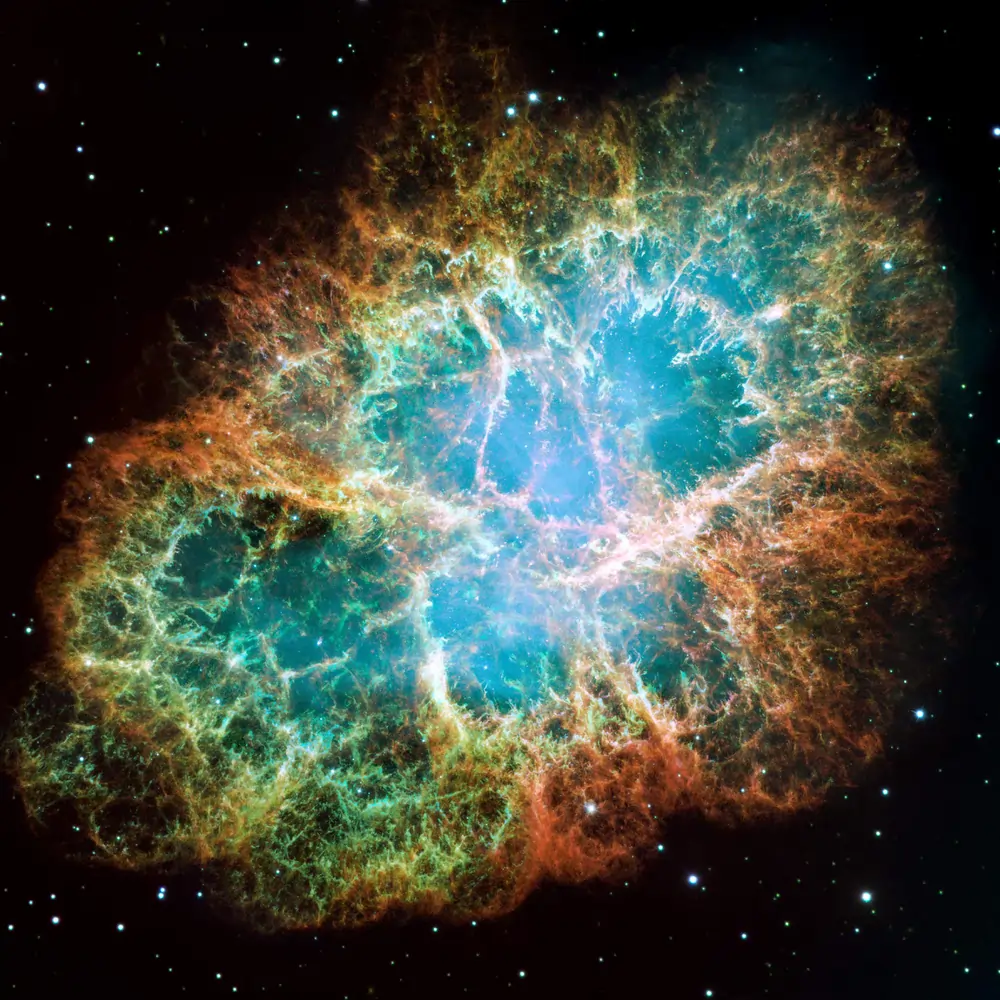
Read also: 3 Most Important Theories to Explain How the Solar System Formed?
5. The Boomerang Nebula
The Boomerang Nebula is a new planetary nebula and the coldest place in the universe (1oK). This stunning NASA/ESA Hubble Space Telescope image showcases Hubble’s incredible ability to reveal intricate details in celestial bodies.
The Boomerang Nebula is one of the Universe’s most unique places. In 1995, astronomers Sahai and Nyman discovered its extreme cold using Chile’s 15-metre Swedish ESO Submillimetre Telescope. A temperature of -272°C is just a degree over absolute zero, the lowest possible temperature.
Remarkably, even the -270°C background glow from the Big Bang is hotter than this nebula, making it the only known object colder than the cosmic microwave background radiation.
This recently identified Nebula by NASA is situated in the constellation of Centaurus and is among the recently found Nebula by NASA. Approximately 5000 light-years from Earth, the Boomerang Nebula is a planetary nebula formed around a bright central star. This star expels gas during its final life stages, creating the nebula.
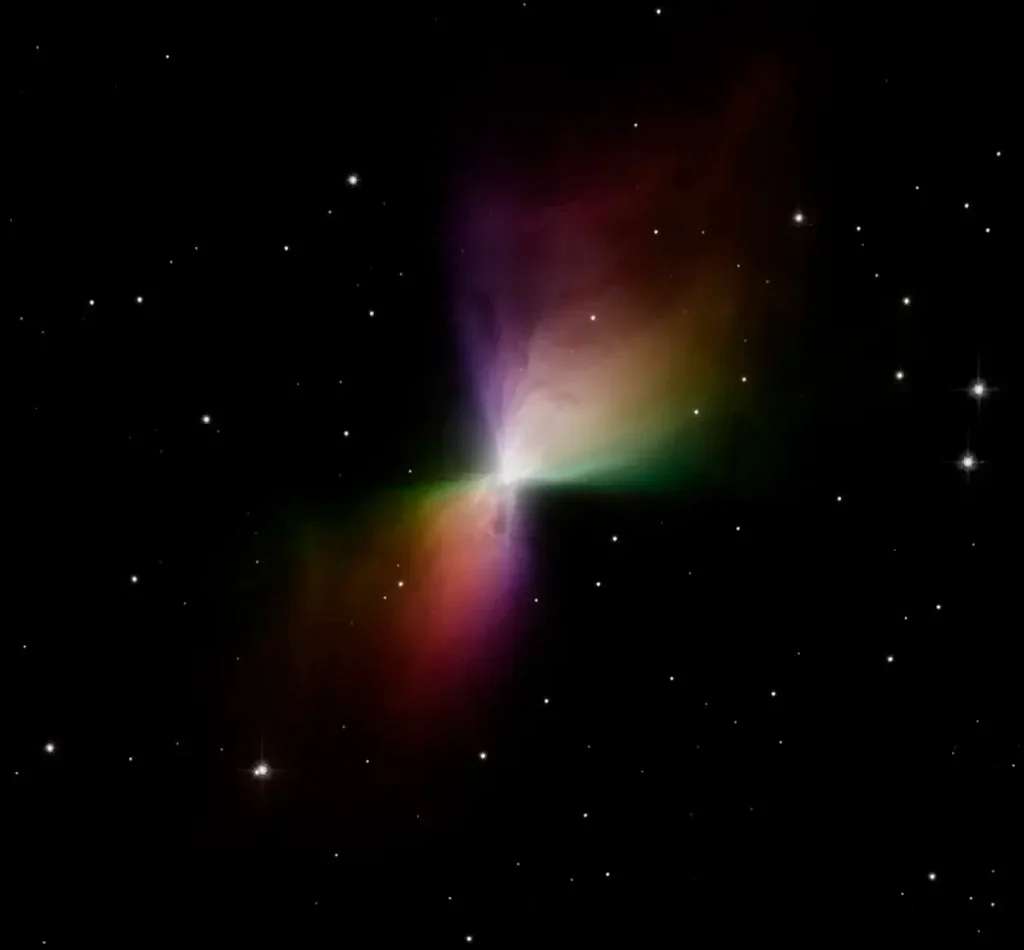
6. The Crab Nebula (Messier 1)
The Crab Nebula, also called Messier 1 (M1), is the brightest supernova remaining visible in the sky and the recently found nebula by NASA.
As the term “supernova remnant” implies, it is the aftermath of a star’s explosive death. When a massive star exhausts its fuel, the outer layers lose the support provided by the heat and pressure of the core. These layers collapse inward towards the star’s center and rebound in a colossal explosion known as a supernova.
M1 comprises the gas -mainly hydrogen released from the dying star. It is sometimes referred to as both a nebula and a supernova remnant. A supernova remains a specific type of nebula, generally for the patches of gas and dust radiating in the sky.
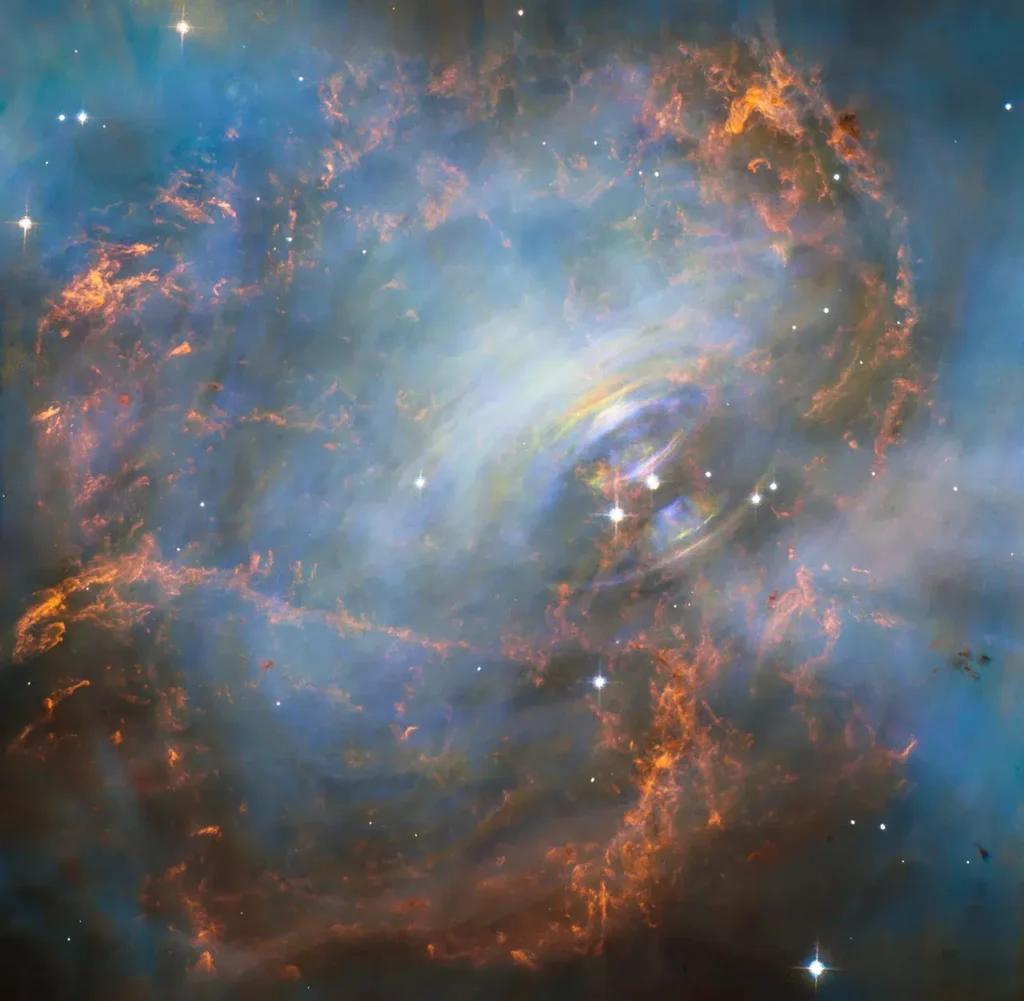
7. The Tarantula Nebula
The Tarantula Nebula is a place of a hugely ionized- hydrogen place in the Large Magellanic Cloud, which is considered a part of the satellite galaxy of the Milky Way. The nebula comprises a cloud of interstellar gas, primarily hydrogen, illuminated from within by young, hot stars that ionize the surrounding gas. As the gas atoms recombine, they emit visible light.
This recently identified Nebula by NASA has a total mass of approximately 1,000,000 solar masses. It spans 170 parsecs (550 light-years) in diameter, making it the most significant gas space in the entire Local Group of galaxies.
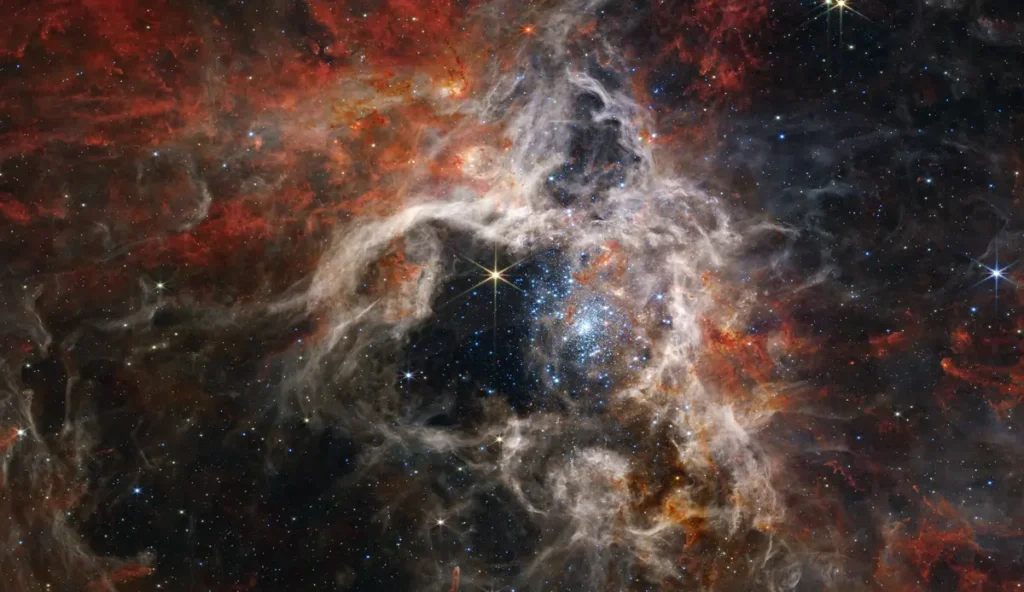
Read also: When will the Andromeda and Milky Way Galaxy Collide
8. The Bubble Nebula (NGC 7635)
The Bubble Nebula is part of the recently identified Nebula by NASA. It spans seven light-years—about one-and-a-half times the interval from our sun to its nearer stellar neighbor, Alpha Centauri—and is situated 7,100 light-years from Earth in the constellation Cassiopeia.
The turbulent star which created this nebula is 45 times more massive than our sun. The star’s gas heats up so intensely that it escapes into space as a “stellar wind” traveling at over 4 million miles per hour. This powerful outflow pushes the cold interstellar gas ahead of it, forming the bubble’s outer edge, much like a snowplow accumulates snow in front of it as it moves forward.
As the bubble’s shell expands outward, it collides with dense regions of cold gas on one side. This asymmetry causes the star to appear significantly off-center within the bubble, positioned at the 10 o’clock mark in the Hubble image.
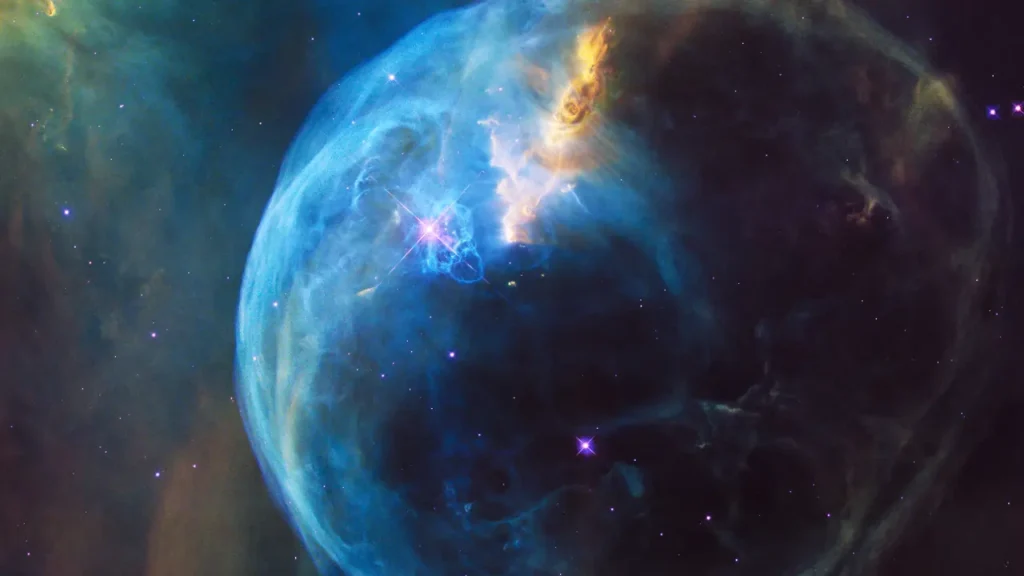
9. The Omega Nebula (Messier 17)
The Omega Nebula, also called M17, is a recently identified nebula by NASA and is one of the most prominent star-forming regions in the Milky Way galaxy. Hubble’s breathtaking image of the central part of the nebula has been colorized to highlight specific wavelengths of light, with green representing oxygen and red revealing hydrogen and infrared light.
It is also known as the “Swan Nebula.” The Omega Nebula was discovered in 1745 by Swiss astronomer Jean-Philippe Loys de Chéseaux. It is situated 5,500 light-years from Earth in the constellation Sagittarius. M17, located near M16 and M18 in the sky, is best observed on clear nights in August. With an apparent magnitude of 6, it can be seen with binoculars.
It has many stars, including one of the galaxy’s youngest star clusters, just 1 million years old. However, the surrounding gas and dust obscure many of the young stars in this cluster. The intense radiation from these new stars evaporates and degrades the dense clouds of cold gas where new stars form.
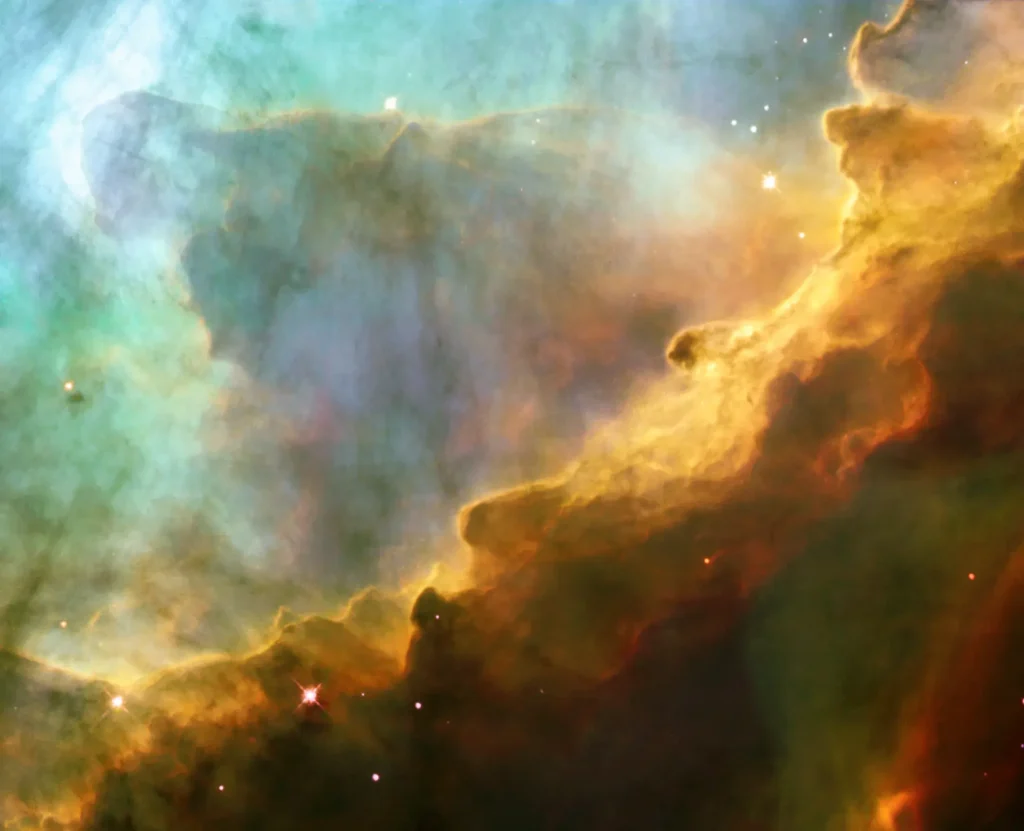
Read also: How many solar systems are in the Milky Way Galaxy
10. The Lagoon Nebula (Messier 8)
The Lagoon Nebula, also known as Messier 8, is another recently identified nebula by NASA. It is a bright emission nebula in the constellation Sagittarius. It is an active stellar nursery where dust and gas combine to form new stars.
The nebula gets its name from the dark lane that runs through its middle, resembling a sandbar. The bright regions on either side give it the appearance of a lagoon.
Located about 5000 light years away, near the center of our Milky Way Galaxy within Sagittarius’s rich starfields, the Lagoon Nebula features an embedded open star cluster (NGC 6530)—the hot stars within this cluster power the nebula’s glowing appearance.
Spanning 33 light-years across and shining with a magnitude of 6, M8 is an excellent target for observation through a telescope or binoculars. Its filaments of glowing gas and dark dust clouds make it an exciting subject for deep-sky astrophotography. The best time to observe and photograph the Lagoon Nebula in the Northern Hemisphere is June through August.

Read also: Different Types of Galaxies in the Universe
Read also: Black Holes | Definition, Facts, Formation, Types
Conclusion
The Recently Identified Nebula by NASA offers a fascinating glimpse into the vast and mysterious universe. These celestial formations, captured with cutting-edge technology, reveal the dynamic processes of star birth and death.
From the vibrant emission nebula to the intricate planetary nebula, each discovery enriches our understanding of the cosmos and underscores the beauty and complexity of our galaxy. NASA’s latest findings advance scientific knowledge and inspire wonder and curiosity about the universe.
By exploring these ten recently identified nebula by NASA, we gain insight into the life cycles of stars and the ongoing marvels of space exploration. With their unique characteristics and significance, these nebulae highlight the relentless pursuit of knowledge and the awe-inspiring discoveries that await us in the depths of space.
NASA’s introduction of these new nebula marks a major milestone in our continued universe exploration. Each nebula, with its unique structure and story, enriches our understanding of the cosmos and the dynamic processes that govern the formation and evolution of celestial bodies.
From stellar nurseries where new stars are born to remnants of powerful supernovae, these nebula provide invaluable insights into the life cycles of stars and the complex interplay of matter and energy in space.
As we continue to uncover the mysteries of the cosmos, the Recently Identified Nebula by NASA reminds us of the boundless beauty and complexity of the universe.
1. What is a nebula?
A nebula is a vast cloud of gas and dust in space. It often serves as a stellar nursery where new stars are born. Nebulas can also form from the remnants of dying stars, creating beautiful and intricate structures.
2. What are the types of a nebula?
These celestial formations come in various types, including emission nebula, reflection nebula, and planetary nebula, each with distinct characteristics and appearances.
3. How does NASA identify new nebula?
NASA identifies new nebula using advanced telescopes and instruments like the Hubble Space Telescope and the Chandra X-ray Observatory. These tools capture high-resolution images and data across different wavelengths, allowing scientists to observe nebula’s detailed structures and compositions. The information gathered helps researchers understand the processes involved in nebula formation and evolution.
4. Why is the nebula important for understanding the universe?
Nebulas are crucial for understanding the universe because they are the birthplaces of stars and planets. Studying nebulas helps scientists learn about the life cycles of stars, the formation of solar systems, and the distribution of elements essential for life. Nebulas also provide insights into the dynamics of galaxies and the interstellar medium.
5. What are some of the most recently identified nebula by NASA?
Some of NASA’s most recently identified nebula include intricate structures like the Stingray Nebula, the youngest known planetary nebula, and the Cygnus Loop, a supernova remnant showcasing complex filamentary structures. These discoveries are made possible through NASA’s ongoing space missions and advanced observational technologies.
6. How do nebula get their names?
Nebula often gets their names based on their shapes, discoverers, or the constellations in which they are located. For example, the Horsehead Nebula is named for its horsehead-like shape, while the Crab Nebula was named due to its resemblance to a crab in early telescopic images. Some nebula are also named after famous astronomers or space missions.
7. What can we learn from the nebula images captured by NASA?
NASA’s images of nebula provide valuable information about the physical and chemical processes occurring in these regions. They reveal star formation, stellar evolution, and the interactions between stars and their surrounding environments. These images also help scientists study the distribution of elements and compounds in space, contributing to our understanding of the cosmos and the origins of life.
Reference
- Career Aspirations, & Astronauts, H. (2017, October 19). Messier 27. Nasa.gov. https://science.nasa.gov/mission/hubble/science/explore-the-night-sky/hubble-messier-catalog/messier-27/
- Carina nebula. (n.d.). HubbleSite. Retrieved May 21, 2024, from https://hubblesite.org/contents/media/images/3879-Image
- Career Aspirations, & Astronauts, H. (2017a, October 19). Messier 16. Nasa.gov. https://science.nasa.gov/mission/hubble/science/explore-the-night-sky/hubble-messier-catalog/messier-16/
- Career Aspirations, & Astronauts, H. (2017b, October 19). Messier 20. Nasa.gov. https://science.nasa.gov/mission/hubble/science/explore-the-night-sky/hubble-messier-catalog/messier-20/
- The Boomerang Nebula – the most excellent place in the Universe? (n.d.). Www.spacetelescope.org. Retrieved May 21, 2024, from https://esahubble.org/images/heic0301a/
- Career Aspirations, & Astronauts, H. (2017a, October 19). Messier 1. Nasa.gov. https://science.nasa.gov/mission/hubble/science/explore-the-night-sky/hubble-messier-catalog/messier-1/
- The Editors of Encyclopedia Britannica. (2024b). Tarantula Nebula. In Encyclopedia Britannica.
- Bubble nebula (NGC 7635). (n.d.). HubbleSite. Retrieved May 21, 2024, from https://hubblesite.org/contents/media/images/2016/13/3725-Image.html


